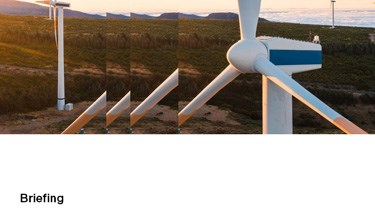European Court of Justice backs up European Commission’s tough approach to EU merger control enforcement
On 13 July 2023, the European Court of Justice (“ECJ”) delivered a landmark decision in relation to EU merger control (Case C-376/20 P). It is the first time that the highest court of the European Union has dealt with the interpretation of the substantive merger control test – “significant impediment to effective competition” (“SIEC”) – as applied to non-coordinated effects in oligopolistic markets. The Judgment settles the dust on the interpretation of important concepts of the substantive test, the framework for the assessment of efficiencies and the applicable standard of proof pursuant to the European Merger Regulation (“EUMR”).
Background
In 2016, the European Commission (“Commission”) blocked the contemplated acquisition of Telefónica Europe Plc (O2) by CK Telecoms (Hutchison/Three) (Case M.7612) which would have reduced the number of mobile network operators on the UK market from four to three. With a remarkable judgment of 28 May 2020 (Case T-399/16), the General Court of the European Union (“GC”) had annulled the Commission’s prohibition decision – shaking the very foundations of EU merger control enforcement (see our analysis here). Given the central issues at stake, it was not surprising that the Commission appealed the GC’s decision.
Judgment
The ECJ – sitting as Grand Chamber which highlights the exceptional importance of the case – quashed the preceding GC judgment with all clarity when it referred to “the breadth, nature and scope of the errors made by the [GC], identified in the present judgment, which affect the [GC’s] reasoning as a whole”. Most notably:
- The GC applied the wrong standard of proof. Unlike the GC held, the Commission is not required to demonstrate with a “strong probability” the existence of a significant impediment to effective competition. The Commission only has to demonstrate by means of a sufficiently cogent and sufficient body of evidence that such an impediment is “more likely than not”.
- The GC confused important concepts, which were applied to interpret the SIEC test, namely “elimination of an important competitive constraint” (recital 25 EUMR), “important competitive force” (para. 37 Commission Horizontal Merger Guidelines), and “close competitor” (para. 28 Commission Horizontal Merger Guidelines).
- According to the EUMR, “concentrations involving the elimination of important competitive constraints that the merging parties had exerted upon each other, as well as a reduction of competitive pressure on the remaining competitors, may, even in the absence of a likelihood of coordination between the members of the oligopoly, result in a significant impediment to effective competition”. The ECJ recalls the objective of the EUMR to establish effective control of all concentrations, including those giving rise to non-coordinated effects. Unlike the GC held, the Commission is therefore not required to demonstrate cumulatively (i) the elimination of important competitive constraints that the merging parties had exerted upon each other and, (ii) the reduction of competitive pressure on the remaining competitor, to establish a significant impediment to effective competition.
- The Commission Horizontal Merger Guidelines recognize that a merger involving firms that have more of an influence on the competitive process than their market shares or similar measures would suggest, may significantly impede effective competition, in particular when the market is already concentrated. The ECJ confirms this approach. But unlike the GC held, the Commission is not required to demonstrate that an undertaking competed particularly aggressively – and certainly not only based on competition in terms of price – to classify it as an “important competitive force”.
- According to the Commission Horizontal Merger Guidelines, the higher the degree of substitutability between the merging firms' products (i.e., the closer competitors the merging firms are), the more likely it is that they will raise prices significantly and that the merger will significantly impede effective competition. The ECJ confirms this approach. However, unlike the GC held, it cannot be concluded that only a concentration between “particularly close competitors” could significantly impede effective competition. The ECJ recalls that high pre-merger margins – which may indicate that the parties to the concentration are neither the closest competitors nor particularly close competitors – may also make significant price increases more likely. Therefore, no general principle can be inferred from the Judgment as to how close competitors must be in order for a merger to lead to a significant impediment to effective competition. Closeness of competition is only one of the factors relevant for the assessment.
- The ECJ reiterates that these concepts are only some of the factors relevant for the substantive assessment of a transaction that should not be understood too formalistically.
- Finally, the GC did not properly interpret the framework for the assessment of efficiencies. The Commission is not required to always take “standard efficiencies” into account which may be specific to all concentrations. The burden of proof to demonstrate the existence of all kinds of efficiencies is solely borne by the undertakings concerned.
Comment
The preceding GC decision was a major setback for the Commission’s approach to the assessment of non-coordinated effects, as the GC dismissed key elements of the Commission’s own interpretation (and expansive application) of the SIEC test. The standard of proof suggested by the GC was seen as unreasonably high making it too difficult for the Commission to block anti-competitive mergers. The Judgment of the ECJ therefore can be seen as a win for the Commission as it reaffirms the previously settled state of the law, the ECJ’s case law and the Commission Horizontal Merger Guidelines. The GC will now have to take into account the clarifications provided by the ECJ in its new judgment.
While the ECJ’s clarifications are welcome (see, e.g., the recent confusion about the applicable standard of proof which is also apparent from the different terminology applied by the GC in its thyssenkrupp judgment, Case T-584/19, para. 280), the importance of the Judgement follows from its counterfactual. Any other decision would have had significant implications for the Commission’s case handling and the effectiveness of EU merger control enforcement as a whole. The Judgment grants the Commission flexibility in the application of the concepts of the EUMR and in the assessment of a SIEC in oligopolistic markets without demanding a very high standard of proof. The Judgment will likely give the Commission some comfort in challenging problematic mergers in the future.
At the same time, the Judgment does not raise the bar for judicial review. The standard of review is not confined to manifest errors of assessment and the Commission is only granted a margin of discretion with regard to economic matters for the purpose of applying the substantive rules of the EUMR. However, subsequent appeals will remain difficult. CK Telecoms was only the sixth case in which the EU courts annulled a prohibition decision. Potential appellants will take good note of the ECJ’s position.
Well
informed
Subscribe to our newsletter now to stay up to date on the latest developments.
Subscribe now









